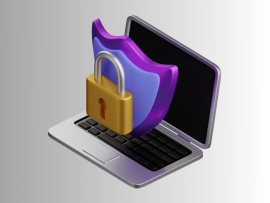In today’s interconnected world, cyber resilience has become a key priority for businesses, especially when managing the supply chain. Supply chains increasingly rely on digital systems, creating new vulnerabilities to cyber threats. A single breach can disrupt operations, damage reputations, and lead to financial losses. Therefore, ensuring cyber resilience within the supply chain—the ability to withstand and recover from cyberattacks—is essential for maintaining business continuity and securing sensitive data. Here's how organizations can prepare for cyber threats in the supply chain. 1. Conduct a Comprehensive Risk Assessment The first step toward achieving cyber resilience in the supply chain is conducting a thorough risk assessment. Organizations must identify all potential vulnerabilities in their supply chain, including digital and physical risks. This involves mapping out all suppliers, vendors, and partners, assessing their cybersecurity measures, and evaluating how a breach in one part of the supply chain could affect the whole system. By understanding the risks, businesses can better allocate resources and prioritize efforts to strengthen the areas most susceptible to cyber threats. 2. Establish Strong Cybersecurity Standards Across Partners Since supply chains often involve numerous third-party vendors, ensuring that cybersecurity standards are consistent across all parties is crucial. Businesses should require vendors and suppliers to meet specific cybersecurity criteria before establishing partnerships. This might include compliance with data protection regulations such as GDPR, adherence to industry-specific security standards like ISO 27001, and..
Read MoreSmall businesses are increasingly becoming targets of cyberattacks. While large corporations may have extensive resources to allocate to cybersecurity, small businesses often operate on tighter budgets, making it seem challenging to implement robust security measures. However, cyber threats don’t discriminate based on business size; a single breach can have devastating consequences. The good news is that small businesses can still implement effective cybersecurity practices without breaking the bank. Here are some budget-friendly tips to protect your business from cyber threats. 1. Educate Your Employees One of the most cost-effective ways to improve your business’s cybersecurity is through employee education. Human error, such as falling for phishing scams or using weak passwords, is often the weakest link in cybersecurity. Offering basic training on common threats like phishing, social engineering, and malware can go a long way in preventing attacks. You don’t need expensive courses—many free or low-cost online resources are available to help employees understand how to recognize and avoid common cyber threats. 2. Implement Strong Password Policies Passwords are the first defense against unauthorized access, yet many small businesses rely on weak, reused, or easily guessable passwords. Implementing a firm password policy that requires employees to use complex, unique passwords for each account is an affordable but powerful step in securing your systems. Encourage the use of password managers, which securely store and generate strong passwords for different accounts. Many..
Read MoreIn times of crisis—whether it's a global pandemic, natural disaster, or economic downturn—businesses are forced to operate under pressure, adapt quickly, and protect critical assets. One area that can either strengthen or break a company during these times is cybersecurity. Far beyond just a defensive measure, cybersecurity plays a vital role in building business resilience. The Rise in Cyber Threats During Crises Criminals thrive on chaos. During periods of uncertainty, cyberattacks often surge. Opportunistic attackers exploit overwhelmed IT teams, distracted employees, and shifting infrastructure. Phishing scams, ransomware attacks, and insider threats are prevalent when businesses are focused on crisis response. Without strong cybersecurity measures in place, a business already dealing with operational disruptions could face devastating data loss, service outages, or financial fraud—all of which can magnify the impact of the crisis. Cybersecurity as a Resilience Enabler Effective cybersecurity doesn’t just prevent breaches—it helps organizations respond to and recover from disruptions more effectively. Here’s how: Business Continuity: Cybersecurity frameworks often include incident response and disaster recovery planning as key components. These plans ensure data can be restored quickly, operations can resume, and communication flows remain intact. Operational Flexibility: With secure remote access, cloud protection, and endpoint monitoring, businesses can safely transition to remote work models or decentralized operations in the event of an emergency. Reputation Management: Trust is critical during crises. A company that safeguards customer data and maintains service..
Read MoreIn today’s digital-first world, cybersecurity threats are not just a concern for large corporations—they’re a real and growing risk for businesses of all sizes. As attackers become more sophisticated, organizations must move beyond traditional defenses and adopt proactive strategies to identify and address hidden vulnerabilities. One of the most effective ways to do this is through regular penetration testing. What Is Penetration Testing? Penetration testing, often referred to as a "pen test," is a simulated cyberattack conducted by security professionals to assess the security of an organization’s systems, networks, and applications. The goal is to identify exploitable weaknesses before a real attacker can find and abuse them. Unlike automated scans, penetration testing utilizes the same tools and techniques as malicious hackers, providing a real-world assessment of your defenses. Why Regular Testing Matters Security is not a one-time effort. As your business grows—by adding new software, expanding your infrastructure, or onboarding remote workers—your attack surface also evolves. Regular penetration testing ensures your defenses are up to date with these changes. Here’s why consistent testing is critical: Identify Unknown Vulnerabilities: Even the most secure-looking system can hide flaws. Pen tests uncover what automated tools might miss. Validate Existing Controls: Testing proves whether your security measures are effective in a real-world attack scenario. Support Compliance and Regulation: Many industry standards (such as PCI DSS, HIPAA, and ISO 27001) require regular security testing as..
Read MoreAs cyber threats continue to grow, small and medium-sized enterprises (SMEs) are increasingly vulnerable to data breaches, ransomware, and other cyberattacks. However, many SMEs face budget constraints that make it challenging to implement robust cybersecurity measures. The good news is that there are many affordable and effective cybersecurity tools available to help protect your business from cyber threats. Here are some of the best cybersecurity tools for SMEs to enhance their protection and minimize risks. 1. Bitdefender Small Office Security Bitdefender is a popular name in the cybersecurity industry, and its Small Office Security tool offers excellent protection for SMEs. This solution provides multi-layered protection, including real-time antivirus scanning, firewall protection, web filtering, and ransomware protection. It’s easy to set up and manage, with a central dashboard to monitor and control security for all devices in your network. Bitdefender is known for its minimal impact on system performance, making it an ideal choice for businesses that need reliable security without compromising productivity. 2. Norton Small Business Norton is another trusted name in cybersecurity, and Norton Small Business is tailored to meet the unique needs of SMEs. This tool offers comprehensive protection against malware, ransomware, and phishing attacks. It also includes device management features, allowing businesses to monitor and secure multiple devices. Norton’s cloud-based solution is simple to use, and it provides remote monitoring, which is perfect for businesses with remote..
Read MoreInsider threats are one of the most dangerous and difficult-to-detect risks faced by organizations today. Unlike external cyberattacks, insider threats come from within—employees, contractors, or other trusted individuals who intentionally or unintentionally compromise the organization's security. These threats can result in data breaches, intellectual property theft, and substantial financial losses. However, with the right strategies in place, organizations can effectively prevent and mitigate the impact of insider threats. Here’s how to protect your organization from these risks. 1. Implement Strict Access Controls One of the first steps in preventing insider threats is to limit access to sensitive data and systems. Implement strict access controls by ensuring that employees only have access to the information and resources they need to perform their job functions. Use the principle of least privilege (PoLP) to restrict access rights to the minimum necessary. Regularly review and update access permissions to ensure that employees who no longer require access to specific systems or data are removed immediately. 2. Monitor User Activity Regularly monitoring user activity can help detect suspicious behavior before it escalates into a full-blown security incident. Implement monitoring tools that track employee actions, such as file access, data transfers, and login times. Look for patterns that might indicate malicious intent, such as unusual access to sensitive data, large file downloads, or login attempts outside of regular work hours. Monitoring helps identify potential threats early,..
Read More






